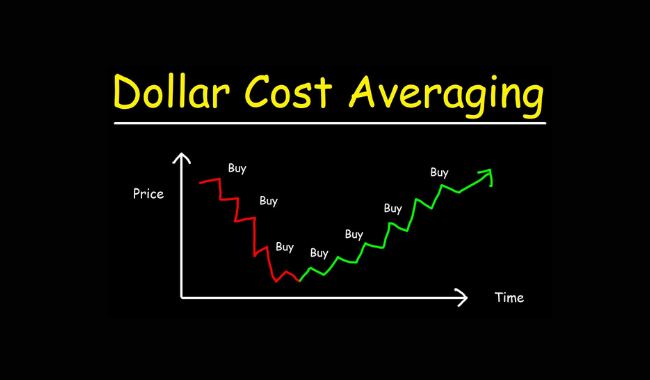
If you want to start an investment journey in the stock market but don’t know where to start, dollar-cost averaging is a simple and effective solution.
It allows investors with limited funds to gradually attain their financial-investment goals over a period of time.
Here in this article, we will discuss everything you need to know about dollar-cost averaging and how to use dollar-cost averaging for investment.
What Is Dollar-Cost Averaging?
It is a method of investment that involves buying shares or mutual funds at regular intervals at different price points, rather than investing it all at once at one price. This means dividing the money you want to invest into smaller portions and buying small shares at specific intervals.
The dollar-cost averaging approach helps minimize investment costs over time and manage price risks.
Unfortunately, the time and energy that goes into timing the market could be beyond the capabilities of a newbie.
Luckily, dollar-cost averaging is easy to understand and can help you develop a successful long-term investment practice. Now that we’ve covered dollar-cost averaging let’s discuss how to use the strategy.
How to Use Dollar-Cost Averaging
You don’t need a degree in finance to grasp how to use dollar-cost averaging. All you need to do is invest the same quantity of cash in a specific mutual fund or stock.
The amount you invest remains the same even when the shares experience a price change. So, whether the market is on an uptrend or downtrend, you’ll need to stay consistent in your investing practice.
Dollar-cost averaging is an effective strategy because it eliminates the emotional toll involved in watching market prices change.
Beginners tend to have a hard time sticking to an investment strategy because of the fluctuations in share prices. The number of shares you get will vary each month based on the price per share during the purchase period.
An increase in share prices means you’ll have fewer shares per dollar you invest. On the other hand, a decrease in share prices translates to more shares per dollar.
Here are some tips to keep in mind when implementing a dollar-cost averaging strategy.
1. Decide the total amount you want to invest
You shouldn’t invest using the money you’ll need within the next five years. This is because it’s hard to determine the market’s direction in the short term. Fortunately, you don’t have to start with a large sum since you’ll be dividing the investment into smaller portions.
2. Determine the overall period of investment
Once you know how much money you can invest, the next thing to determine is the time of your investment. This is the entire period of implementing your investment strategy, which could range from years to a decade.
3. Find out how frequently you’ll invest
Your investments could be monthly or quarterly, depending on preference. You’ll need to buy the shares each month for the monthly interval, while you’ll invest every three months in the quarterly interval.
4. Divide the cash according to your investment intervals
The next thing to do is divide the total amount of money you want to invest into equal portions. This will tell you how much you’ll be investing each month or three months.
Luckily, the value you set won’t change throughout your investment despite the changes in share prices.
5. Stick to the dollar-cost averaging plan
If you allow emotions to influence your investment practice, you’ll have difficulty following through with your dollar-cost averaging strategy. You’ll need discipline and patience if you want to see a return on investment.
Benefits of Dollar-Cost Averaging
There are several advantages of using the dollar-cost averaging strategy.
1. The first is that it removes emotions from your investment process, reducing the chances of making beginner mistakes. You won’t have to adjust how much you invest depending on the market prices, so you can easily build consistency.
2. Another benefit of this strategy is that it can reduce cost per share over time. As a result, each share you’ll buy could be cheaper or more expensive than the last.
3. Lastly, using dollar-cost averaging can help avoid losses you’d incur after buying all your stocks at once at a high price.
Drawbacks of Dollar-Cost Averaging
There are also some disadvantages of this strategy, and we’ll list them below.
1. The first disadvantage is that you could miss out on making huge gains when the market is in your favour, since you won’t invest all your money at once.
2. The other drawback is that you can incur many transaction costs every time you invest. Again, this could affect your returns negatively.
Conclusion
Dollar-cost averaging is a great strategy for investing in stocks if you are a beginner. It can help reduce indecisiveness in your investment practice while reducing share price risk.
Instead of investing all the money at once, you’ll buy the shares at a specific price at regular intervals. That makes it great for those with limited funds.
